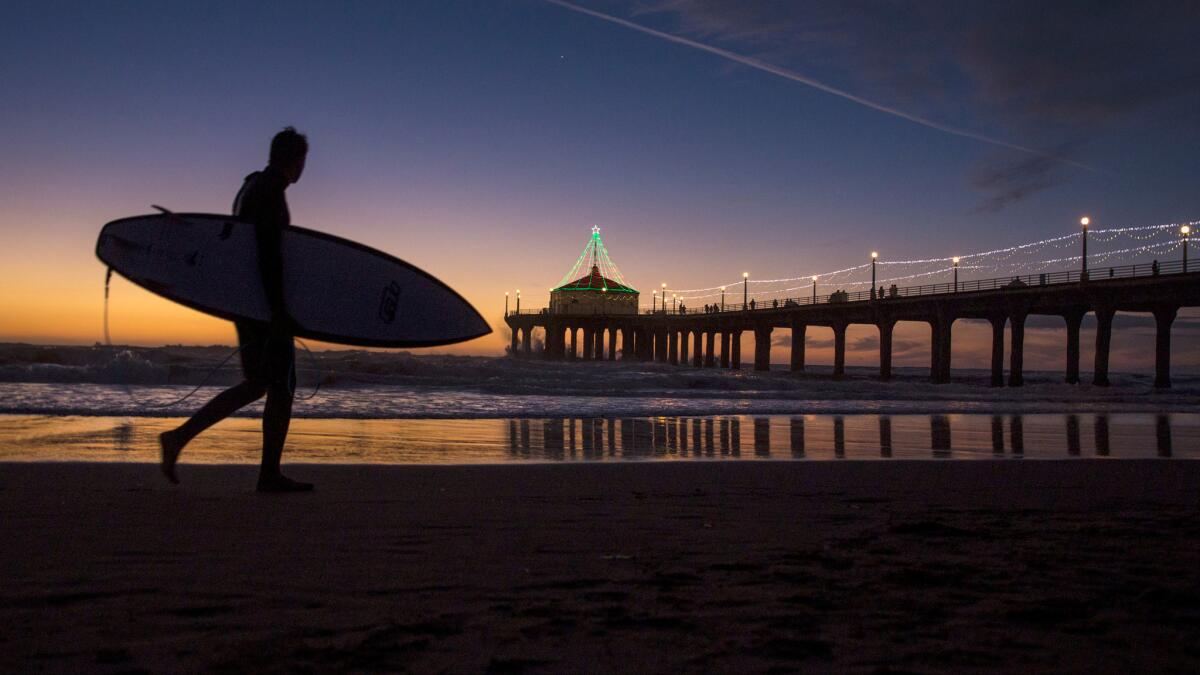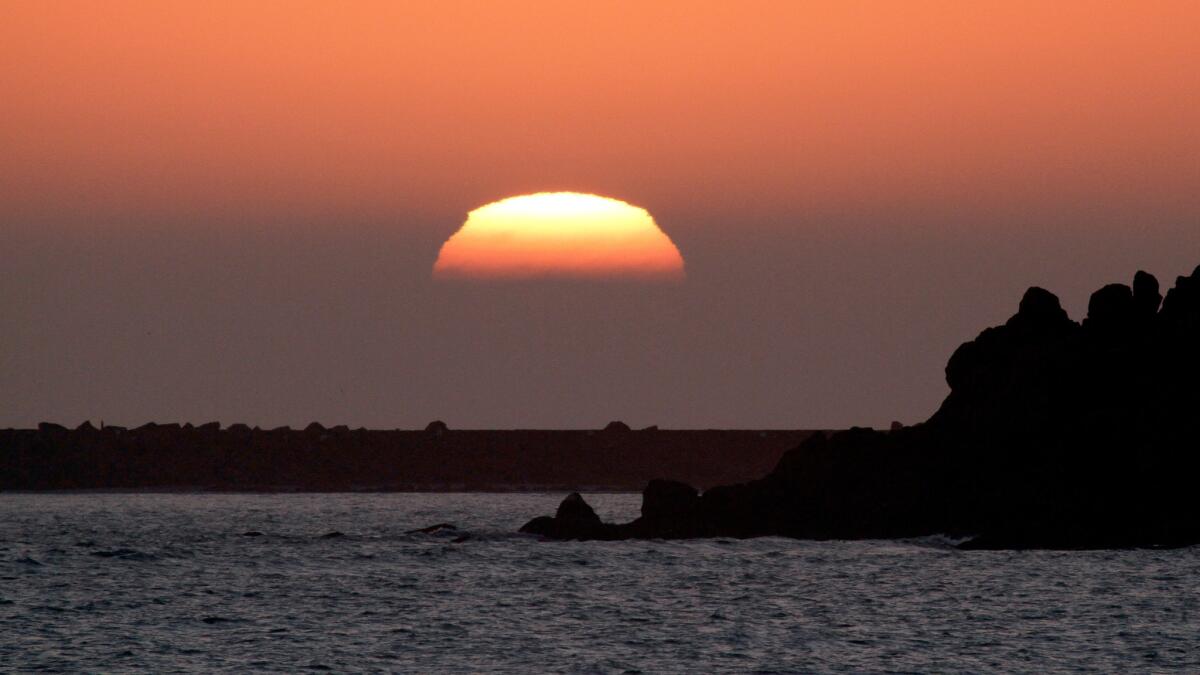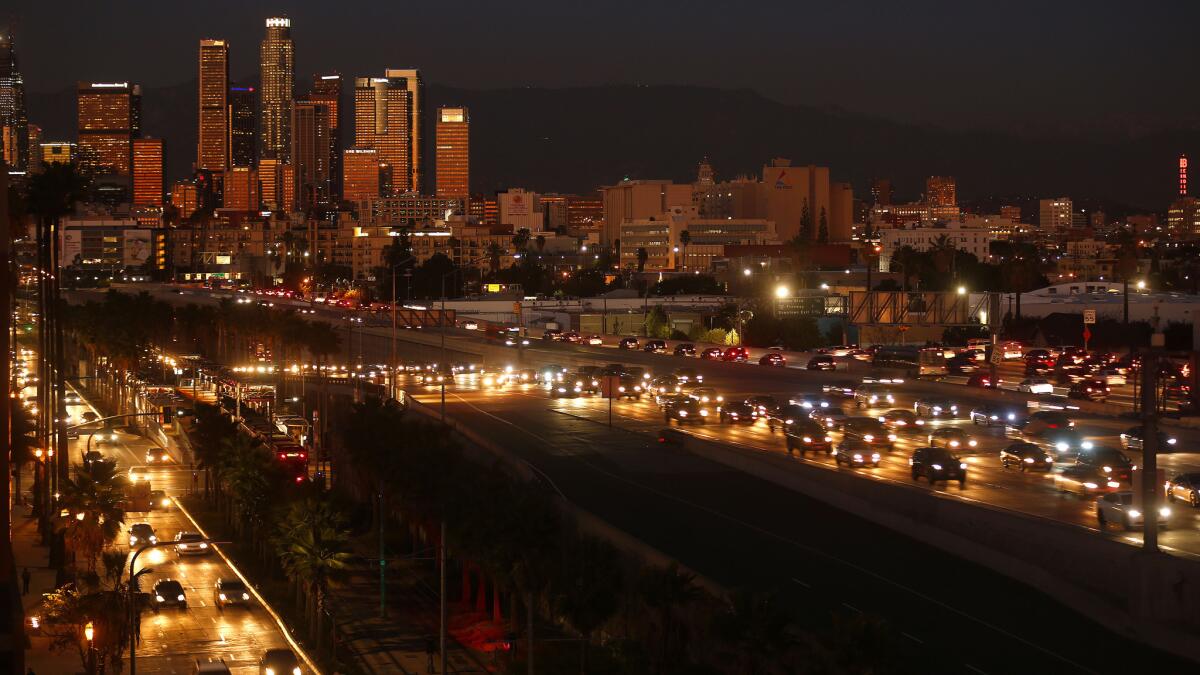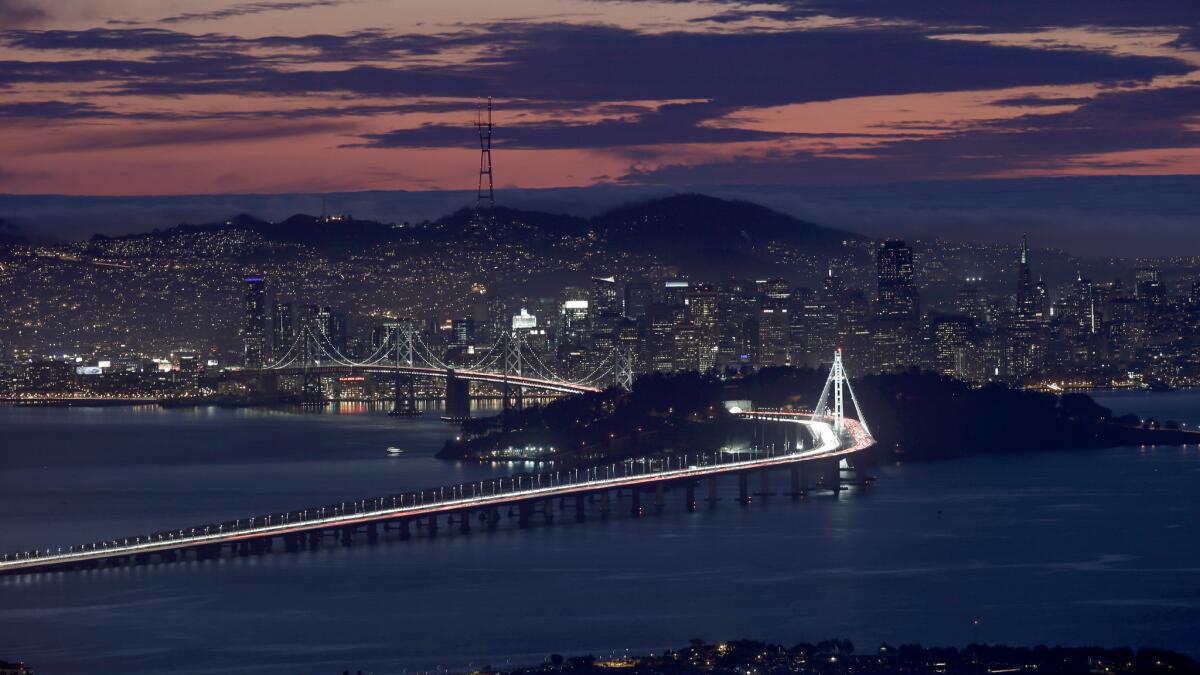The sunset that takes an hour to go from date palms to redwoods

- Share via
In a state renowned for its extremes, Monday’s summer solstice will be a slow-motion study in California’s extraordinary geography.
The last ray of sunshine will fall at 8:55 p.m. in Crescent City, a foggy northern outpost on the Pacific Ocean where it rains more than New Orleans or Seattle.

About 820 miles southeast, where date palms thrive in the nation’s hottest and driest climate, the sun will slip away in the village of Bard at 7:49 p.m. — about an hour earlier.
Thanks to California’s dimensions, which is longer north to south than Texas is east to west, no other state in the continental U.S. has such a wide divergence in its sunset times.
“We have a long … footprint,” USC scientist Travis Longcore said. “If you want diversity, come to California.”

The length of the day and the time of the sunset are powerful forces in modern life, experts say — affecting income, health and sexuality. People get less sleep and make less money in cities with late sunsets. Fewer babies are conceived near the summer solstice.
So, though both are part of the Golden State, Bard and Crescent City operate in very different worlds.
About as far east and as far south as you can step foot in California, Bard is a village near a bend in the Colorado River, which has enriched the soil for millions of years.
The Medjool dates grown in the valley need dry heat, and Bard is even drier and hotter than the date-growing regions of Iraq, Egypt or Somalia. It rains just 3 inches a year in Bard. The temperature Monday is expected to hit 115 degrees.
“We love our heat,” said Raul Peraza, a manager at Imperial Date Gardens. “The dates here are known to be the best Medjool dates in the world. We send them to Dubai, Lebanon, Saudi Arabia.”

By contrast, Crescent City lies in one of the world’s greatest forests, where the cool, foggy weather encourages redwoods to grow as tall as 379 feet — more than half the height of a Los Angeles skyscraper. The city gets 67 inches of rain a year. Monday’s high should be 65 degrees.
“Air conditioning? Yeah, I open the window,” said Crescent City Mayor Ronald Gastineau, a high school teacher.
A lot of people don’t understand why one day is longer than another, Longcore observed. “The Greeks had this figured out 2,000 years ago,” he said, referring to the Earth’s tilted rotational axis as it travels around the sun.
The Greek mathematician Eratosthenes accurately measured the circumference of the Earth and its tilt about 250 B.C. by taking measurements on the summer solstice.
Ever since, the solstice has inspired not only scientific experimentation but ritual observations.
This year, a snake dance and bonfire marking the occasion are planned in Ontonagon, Mich., along Lake Superior. Dominated by Finnish Americans, the village — by virtue being so far north and west — has the latest sunset in the lower 48 states.
So the sun will drop Monday at 9:55 p.m., and a strong twilight will keep it bright enough to read a newspaper until 11 p.m., said Sally Berman, a member of the Friends of the Porkies. The group’s celebration will include a concert by a troupe playing kanteles, a Finnish stringed instrument.
See the most-read stories this hour »
Los Angeles, though on the Pacific Coast, actually lies east of six state capitals and will have a relatively early solstice sunset at 8:08 p.m. As the sun appears to drop into the ocean, a full moon will be rising in the east — a coincidence this year unrelated to the solstice. The Times based its measurements and sunset times on Naval Observatory data and Google Earth’s measuring tool.
Until the late 1800s, there were no official sunset times or even time zones. Cities’ leaders just set the clocks however they wanted.
But railroads and telegraphs started to connect cities, making standardization inevitable. In a sign of its economic and political power, the railroad industry in 1883 decided to divide the nation into four time zones, allowing complex schedules to be better coordinated. Congress took 35 years to make it legal.
Periodically, cities or counties beg to be rezoned.
In 1999, for example, West Wendover, Nev., asked federal bureaucrats to set its clocks ahead an hour, saying the city was in a state of “mass confusion.” The city is a suburb of isolated Wendover, Utah, where the time was an hour later. Washington went along, finding that “the community is already unofficially observing mountain time.”
The same thing happens in Bard, where many residents follow Arizona time because Yuma is closer than any California city.
Severin Borenstein, a UC Berkeley business professor, has found that people and businesses in many cases adapt their behavior to solar time, regardless of what clocks say.
“Time,” Borenstein said, “is just an artificial standardization.”
But it has a powerful economic effect.
A study by Matthew Gibson, an economist at Williams College in Massachusetts, found that people who live at the western end of time zones — where the sun sets later — tend to sleep less, underperform at work and on average earn 5% less than people who live in cities at the eastern side of the same time zones.
“The later it stays light, the later people go to bed,” he said. The result is less sleep and cumulatively it has a big effect on productivity.
Thus, people in Bard should be better rested and earn more money than the ones in Crescent City. But it’s hard to know who has more fun.
In Crescent City, almost everybody takes advantage of the longer day, going to bed later and getting up earlier to enjoy the lush environment, Mayor Gastineau said.
“I do take naps,” he said.
Of course, folks in Alaska can trump any sunset superlatives claimed in the continental U.S. The sun hasn’t set in Barrow, the state’s northernmost incorporated city, since early May. And it will not set until mid-August.
ALSO
Heat and wind feed fire burning almost 8,000 acres in Santa Barbara County
Did bullet train officials ignore warning about need for taxpayer money?
Across L.A. County, law enforcement looks for resources to deal with the mentally ill
More to Read
Sign up for Essential California
The most important California stories and recommendations in your inbox every morning.
You may occasionally receive promotional content from the Los Angeles Times.











